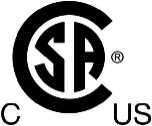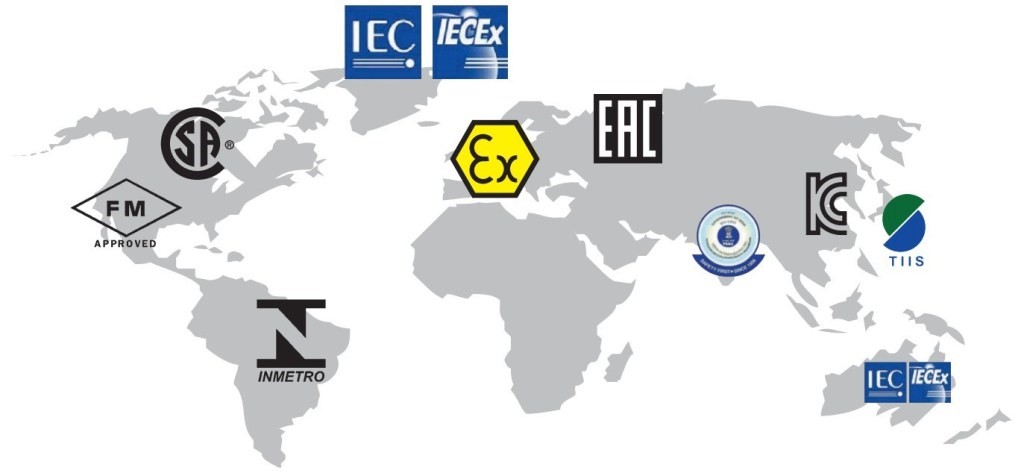“This is your last chance. After this, there is no turning back. You take the blue pill – the story ends, you wake up in your bed and believe whatever you want to believe. You take the red pill – you stay in Wonderland and I show you how deep the rabbit-hole goes.”
– “Morpheus” as played by Lawrence Fishburne in The Matrix
The first time you come into contact with the subject of hazardous area certifications, you may feel like you have chosen to take the red pill. The topic starts off being complex, and the more you study it the more bewilderingly complex it becomes.
There are people who have devoted their entire careers to studying and learning the intricacies of hazardous area certifications and have become legitimate experts in the topic, so this short blog entry will not even attempt to offer up a comprehensive treatment. But hopefully we can orient the newcomer to the subject with some context and provide some clues about where to start looking for more information.
Why Hazardous Area Certification?
Industrial processes must often be conducted in the presence of dangerous atmospheres or materials such as explosive gases, combustible dusts, or flammable liquids. These substances can be ignited by sufficient energy coming from sources like electrical sparks, open flames, and hot surfaces. Electrical equipment installed in these areas needs to be designed with some kind of methodology to prevent that equipment from becoming a source of ignition. In most countries around the world, national and/or local governments enact electrical construction standards intended to prevent accidents and enhance the safety of people and property. In order to ensure that installed equipment is competently designed and tested to provide the necessary level of protection, third-party agencies or “notified bodies” exist to certify that a particular piece of equipment meets the highly specialized design and performance standards for hazardous locations.
Protection Methods
Depending on the nature of the hazard and the type of electrical equipment, different protection methods – design concepts – may be deployed. Ranked from basic to more costly, commonly these include:
- Enhanced Safety
- A simple level of protection intended for situations where the hazard is low and/or very rarely or intermittently present. Typically it consists of a housing with liquid-resistant sealing and gaskets that will also block the entry of gases for a limited period of time.
- Intrinsic Safety
- This method relies on limiting the amount of available energy in the electrical circuit to a very low threshold, such that a short or open circuit is not able to generate an electrical spark sufficiently energetic to cause ignition. It is inherently – intrinsically – safe.
- Flameproof or Explosion Proof Housings
- Similar approaches with different names depending on the standard being applied, the idea is to construct a robust and well-sealed enclosure around the electrical components. In the event that, for example, gases somehow get inside the enclosure and ignition occurs, the hot gases of combustion are contained inside the housing. Any gases that are vented must travel an intentionally long path that cools them to a temperature that is safe for the type of hazard present outside the enclosure.
- Air Purge
- Typically used for large enclosures containing power components such as circuit breakers, relays, or motor starters as well as instrumentation & control panels that contain electronic components in light-duty, unsealed housings. A positive pressure is maintained inside the large enclosure at all times to deliver fresh purge air into the enclosure and prevent the entry of hazardous gases.
Hazardous Area Classification
There are many types and categories of hazards that exist, with different levels of combustibility and different probabilities that the hazard is present. How these areas are classified depends on the country or region where the installation will take place. In the United States, the National Electrical Code (NEC) governs the classification of hazardous locations under two methodologies: the Class/Division system or the Zone system. The Class/Division system is traditional in the US and the Zone system is a newer, alternative concept that is gaining wider acceptance. Once a decision is made for a particular facility about which system will be implemented, that system is then consistently applied throughout the installation. Canada is similar to the US but follows the Canadian Standards Association (CSA) electrical codes. In the European Union, hazardous locations are governed by a CE (Conformité Européenne) standard called ATEX (ATmosphere EXplosive). For the rest of the world, there may be a variety of local codes and standards, but increasingly many countries are adopting a uniform global standard called International Electrotechnical Commission Explosive or IECEx for short. In some cases a country may accept IECEx as a basis standard and still require additional national certification for specific in-country requirements.
Selecting the Right Equipment Certification
Starting with the country where the equipment will be installed, the relevant national standards are identified. The hazard must then be classified by an expert according to that standard. Then the nature and type of equipment is considered and the type of protection methods that are available. The right equipment certification is one that:
- Is appropriate for the country where the equipment is being applied
- Is appropriate for the classification of the hazard
- Is appropriate for the type of equipment being installed and the relevant protection methods available
Finally, different equipment manufacturers may choose to have their products certified by different third-party agencies. As long as the certifying body applies all of the relevant national standards and requirements, then the certifications or “approvals” provided by different agencies are essentially equivalent to one another from an electrical code / legal perspective.
Some Common Hazardous Location Symbols and Links
Factory Mutual “FM” (US/Canada)

CSA (US/Canada)

Underwriters’ Laboratories “UL” (US/Canada)

ATEX (European Union)

IECEx (Worldwide)

Navigating the Matrix
Clearly, there is a lot to know when it comes to hazardous area certifications. As a potential buyer or specifier of equipment just trying to complete a job, it all may seem a bit overwhelming. Fortunately, you’re not stuck out there trying to go it alone. Your best bet for help in choosing the right gear is to start with the equipment manufacturer. No one is more familiar with the product and the scope of its appropriate installations, so they can offer expert knowledge and experienced guidance regarding the proper application of the equipment. And if there’s something they don’t know, they can find out for you or facilitate putting you in touch with additional resources for assistance.
Interested in valve actuator position feedback for hazardous locations? Balluff’s TA12 linear position sensor carries world-wide certifications. To learn more visit www.balluff.us.
Like this:
Like Loading...







